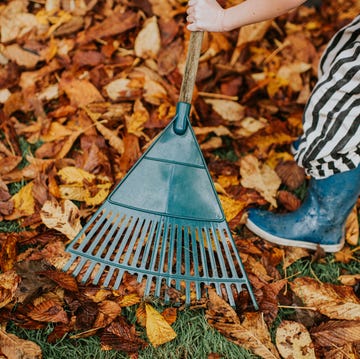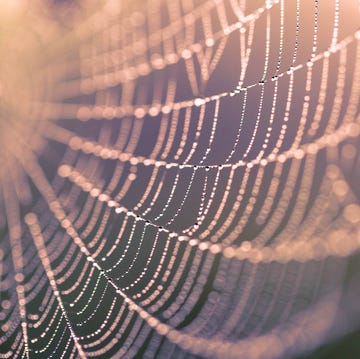A trip to the seaside is as quintessentially British as afternoon tea or Paddington Bear. However, sadly, so is the threat of airborne assault courtesy of the local seagulls. Is it a bird, is it a plane? Yes, it’s a bird, and it’s trying to eat your Mr Whippy.
If you’ve ever had a battered sausage snatched from your hands, or been driven away from your sunbathing spot by flocks of feathers, then you’ll know what I’m talking about. Seagulls are the bullies of the beach. But experts may have discovered a surprising way to keep these angry birds at bay, and it could be sitting in your wardrobe.
I spoke to Dr Neeltje Boogert, associate professor in animal behaviour at the Centre for Ecology and Conservation, University of Exeter, to uncover the secret to stopping seagulls from ruining your next seaside break.
What to read next
Dress to prevent stress: the secret clothing trick to deter seagulls
It turns out, seagulls may not be picky eaters but they are fashion critics. They're adverse to highly contrasting patterns, such as black and white stripes or wasp/bee patterns. So there’s a chance these fashionable prints might make the gulls initially less likely to snatch your ice cream. ‘Some preliminary observations also suggest that high vis clothes might be aversive,’ says Dr Boogert. So if you have any striped beach pieces (and let’s face it, who doesn’t?) or decide to rock neon colours and busy prints this summer, you might just be safe – at least for a while. In short, the louder you dress, the safer your snacks. Although she does emphasise that these clever clothing tricks may not fool them for long, so eat quickly.
Dr Boogert also suggests that a pair of stick-on googly eyes could work. ‘Our research has shown that herring gulls take longer to approach takeaway boxes with googly eyes on them, or other high-contrast markings (such as a black triangle against a white background),’ she explains.
So, what’s it going to be, your lunch, or your fashion dignity? We're guessing our new Uniqlo x Anya Hindmarch tee won't cut it...
Five more tips for getting rid of seagulls
Dr Boogert shares more helpful ways to keep the gulls at bay.
1. Make eye contact
I’ll admit it, I’m intimidated by seagulls. Those beaky birds seem to get bigger and more brazen every time I visit the coast. But Dr Boogert reassures me with the age-old adage, ‘they’re more scared of you than you are of them’.
As evidence, they are surprisingly easy to intimidate, as long as you keep your eye on them. ‘Just like shoplifters are unlikely to go ahead with stealing items from a shop when the shopkeeper keeps an eye on them, or kids in class are unlikely to be naughty when the teacher watches them, gulls are also sensitive to the human gaze,’ says Dr Boogert. ‘When they see we’re “on to them”, they’re less likely to approach our food, because we're a threat, so to steal our food is a risky strategy.’
2. Take shelter
It may seem obvious, but this practical approach is very effective for protecting your picnic. ‘Eating underneath a roof, parasol or umbrella, or with one’s back against a wall, makes it much harder for gulls to approach us unnoticed and make a swift exit,’ says Dr Boogert.
This is because they lose the element of surprise, which is their one (and most terrifying) strategy. ‘They're not great at short flights/taking sharp turns, so if we block their entry/exit to our food, that makes them less likely to take the risk,’ adds Dr Boogert.
3. Put up bunting – yes, bunting
‘Hanging closely-spaced bunting can help deter gulls from entering playgrounds, market squares and other spaces – again, because it’s difficult for these large birds to manoeuvre into and out of spaces where there isn't a clear entry/exit pathway,’ says Dr Boogert. So if you’re setting up camp for a day on the beach, consider packing some cheerful streamers, for both style and seagull security.
4. Do not feed the gulls!
You know how pretty much every pond in this country has a sign that reads: ‘Do not feed the birds,’ well, this is why.
‘Some people feed the gulls, which encourages them to perceive us as a source of food,’ says Dr Boogert. While you may think you’re being kind, you’re actually teaching them to see humans as free delivery. Plus, they’re not supposed to eat our food. Many types of food can be dangerous to their health and our packaging poses great choking risks.
5. Be more environmentally conscious
‘If we want to deter gulls from stealing our food, we should 1) dispose of our food waste properly; 2) don’t hold out our food to make it so easy to take; and 3) stop depleting their natural food sources,’ says Dr Boogert.
Plummeting fish stocks, caused by overfishing and unsustainable fishing practices, push gulls inland for food. If we protect their habitats and food supply, and stop confusing them with our littering and food waste, we can enjoy our ice cream without fear of an aerial ambush.
Why do seagulls steal our food?
Seagulls are opportunists. ‘Herring gulls (the most common species in the UK) are omnivores and opportunistic foragers, which means they have a diet that includes insects, small mammals, fish, eggs, berries and human food,’ says Dr Boogert.
Rather than having a strong preference for a single food source, gulls go for whatever is easiest to get their wings on. Thanks to the abundance of high-calorie and easily digestible human food on our beaches, our alfresco snacks have become their favourite buffet.
Like many animals, they’ve learned to associate humans with an easy meal, targeting busy areas where people are eating. And they’re bold enough to snatch food even if it’s not been dropped or left unattended.
According to a study from the University of Sussex, this cheeky behaviour is actually a sign of their intelligence. Research shows that gulls take cues from humans. In Brighton, researchers placed one blue crisp packet and one green crisp packet in front of groups of herring gulls, while a human experimenter ate from a matching colour. The gulls overwhelmingly pecked at the same colour that the human ate from. Copycats!
Prof Paul Graham, professor of neuroethology at the University of Sussex, explains: ‘While we know that animals learn from each other, we rarely see them learning from a totally different species when it comes to food preferences.’
So much for ‘bird brains’ – they’re smarter than they look.


















